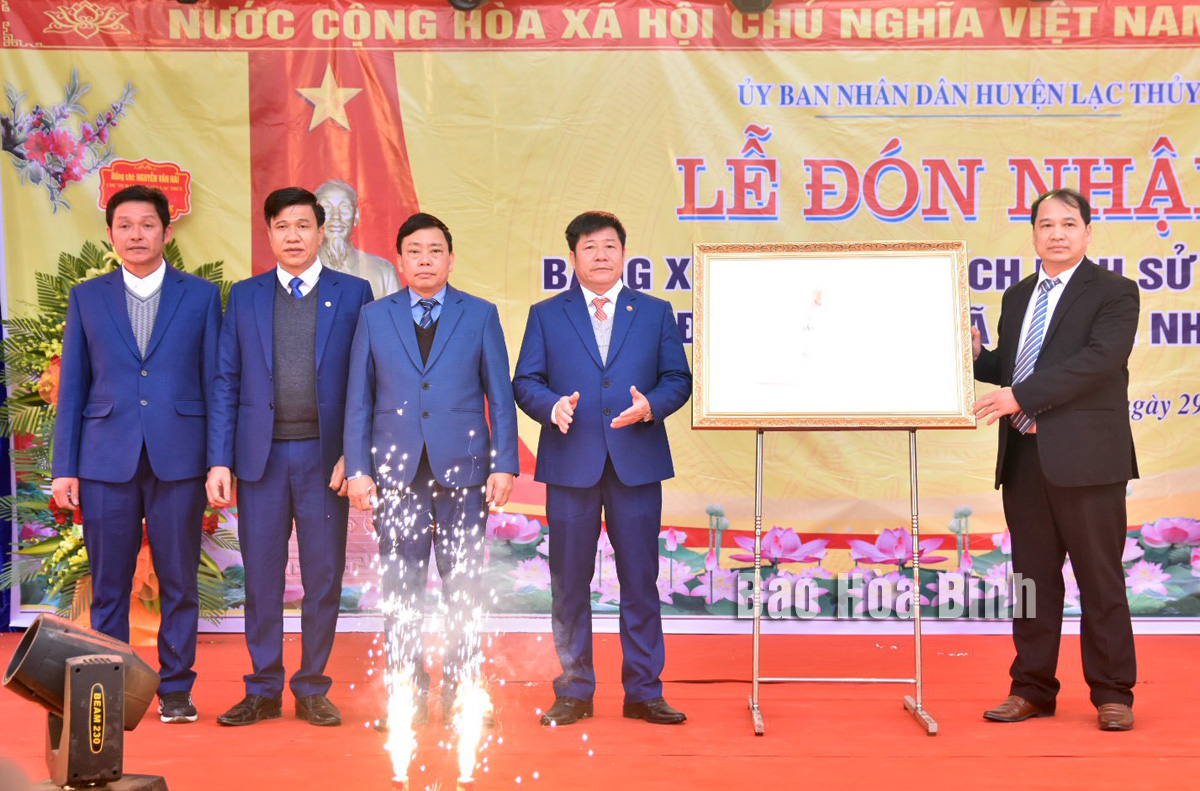
The People's Committee of Lac Thuy district on February 29 held a ceremony to receive a certificate recognising Co Lao Temple as a provincial historical relic. Within the framework of the ceremony, leaders of the Department of Culture, Sports and Tourism, Lac Thuy district, delegates, and locals offered incense at Co Lao temple.

Leaders
of the provincial Department of Culture, Sports and Tourism hand over the
certificate to Co Lao Temple, Thong Nhat commune, Lac Thuy district.
Co Lao Temple was built in Com village in Muong
Teo in the past, now Ninh Thanh village, Thong Nhat commune.
The temple was a place to worship deities who
protect the villagers in Hau Bong commune, Lac Thuy district, Ha Nam province.
It has contributed to meeting the spiritual needs of people in the ancient
Muong Teo region and neighbouring areas and preserving local cultural identity.
Besides religious elements, the temple also holds historical significance as it
honours and expresses gratitude to predecessors and famous figures who
contributed to the cause of national safeguarding and construction. Five
ordinances conferred by the Nguyen feudal dynasty to the deities are preserved at
the temple.
Every year, on January 6 - 7, a festival is held
at the temple. The festival is an occasion for people to remember origins and
remind young generations to do good deeds for a better life. During the
festival, villagers spend time together playing folk games, which help to
strengthen solidarity.
With its formation, development and historical,
cultural and tourist values, the Co Lao Temple relic was recognised as a
provincial historical relic in 2023.
With an increasingly vibrant and widespread emulation movement aimed at building cultured residential areas and cultured families, Yen Thuy District has been making steady progress toward improving both the material and spiritual well-being of its people, while fostering a civilized, prosperous, beautiful, and progressive community.
Once lacking recreational spaces and community facilities, Residential Group 2 in Quynh Lam Ward (Hoa Binh City) has recently received attention for the construction of a new, spacious, and fully equipped cultural house. The project followed the model of state support combined with public contributions in both labor and funding.
The "All people unite to build cultural life" movement, which has been effectively integrated with Kim Boi district’s socio-economic development goals, is fostering a lively spirit of emulation across local residential areas, hamlets, villages, public agencies, and enterprises. In addition, through the initiative, traditional cultural values are being preserved and promoted, while community solidarity and mutual support in poverty reduction and economic development are being strengthened.
A working delegation of the Hoa Binh provincial People’s Committee led by its Permanent Vice Chairman Nguyen Van Toan on June 11 inspected the progress of a project to build the Mo Muong Cultural Heritage Conservation Space linked to tourism services in Hop Phong commune, Cao Phong district.
Born and growing in the heroic land of Muong Dong, Dinh Thi Kieu Dung, a resident in Bo town of Kim Boi district, in her childhood was nurtured by the sweet lullabies of her grandmother and mother. These melodies deeply imprinted on her soul, becoming an inseparable part of her love for her ethnic group's culture. For over 20 years, this love for her hometown has driven Dung to research, collect, and pass down the cultural values of the Muong people to future generations.
In the final days of May, the Ethnic Art Troupe of Hoa Binh Province organized performances to serve the people in remote, mountainous, and particularly disadvantaged areas within the province. These were not just ordinary artistic shows, but they were the meaningful journeys aimed at spreading cultural values, enhancing the spiritual life of the people and contributing to the preservation of ethnic minority cultural identities.



